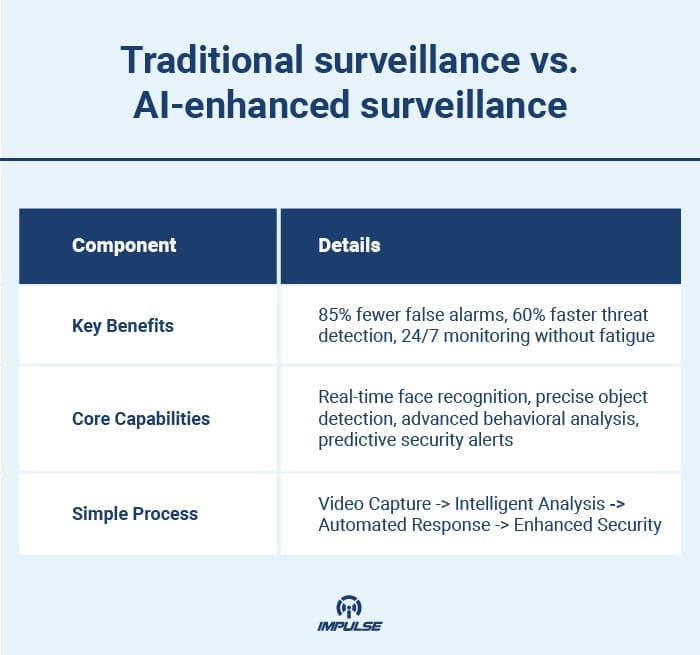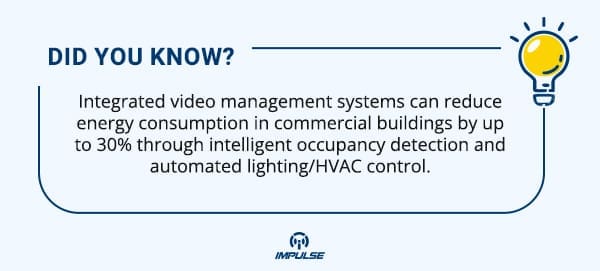The landscape of video management systems is undergoing a revolutionary transformation. As organizations worldwide prioritize security, operational efficiency, and intelligent monitoring, the demand for sophisticated video surveillance technology continues to surge. From AI-powered analytics to cloud-based storage solutions, the future of video management is being shaped by cutting-edge innovations that promise to redefine how we approach security and surveillance.
In this comprehensive exploration, we’ll delve into the key trends that are driving the evolution of video management platforms and examine how these advancements are creating new opportunities for businesses, security professionals, and system integrators. Whether you’re managing a small retail operation or overseeing enterprise-level security infrastructure, understanding these trends will help you make informed decisions about your video management strategy.
The Current State of Video Management Technology
Today’s video management solutions have evolved far beyond simple recording and playback systems. Modern platforms integrate seamlessly with various camera types, from Fixed Network Bullet Cameras offering crystal-clear 5MP resolution with advanced edge analytics, to sophisticated Fixed Network Dome Cameras providing comprehensive coverage with built-in intelligence features.
The foundation of effective video management lies in the ability to handle multiple data streams simultaneously while maintaining system reliability and user accessibility. Contemporary systems must accommodate everything from standard fixed cameras to advanced Motorized IR-Dome Cameras that deliver exceptional image quality even in challenging lighting conditions.
Trend 1: Artificial Intelligence and Machine Learning Integration
Artificial Intelligence in video surveillance represents the most significant paradigm shift in the industry. Modern AI-powered video analytics are transforming passive surveillance systems into proactive security solutions that can identify, analyze, and respond to events in real-time.
Advanced Edge Analytics
The integration of edge computing in surveillance is enabling cameras to process data locally, reducing bandwidth requirements and improving response times. Varifocal Network Bullet Cameras now come equipped with sophisticated edge analytics capabilities, including motion detection and intelligent event recognition, allowing for immediate threat assessment without relying on centralized processing.
Behavioral Analysis and Predictive Intelligence
Machine learning algorithms are becoming increasingly sophisticated in recognizing patterns and predicting potential security incidents. These systems can distinguish between normal activities and suspicious behavior, significantly reducing false alarms while enhancing overall security effectiveness.

Trend 2: Cloud-Based Video Management Systems
The shift toward cloud video management is revolutionizing how organizations store, access, and manage their surveillance data. Cloud-based surveillance solutions offer unprecedented scalability, accessibility, and cost-effectiveness compared to traditional on-premises systems.
Scalability and Flexibility
Cloud platforms enable organizations to scale their video management infrastructure dynamically, accommodating growth without significant hardware investments. This flexibility is particularly valuable for businesses with multiple locations or seasonal security requirements.
Remote Accessibility and Management
Remote video monitoring capabilities allow security personnel to access live feeds and recorded footage from anywhere in the world, enhancing operational flexibility and response capabilities. This trend has been accelerated by the increasing need for distributed security management and remote work scenarios.
Trend 3: Integration with IoT and Smart Building Systems
The convergence of video management systems with Internet of Things (IoT) devices is creating comprehensive smart building ecosystems. This integration enables more sophisticated automation and response capabilities that extend beyond traditional security applications.

Unified Security Platforms
Modern integrated surveillance systems combine video monitoring with access control, fire safety, and building automation systems. PTZ IP Network Cameras with their advanced 40X optical zoom and auto-tracking capabilities serve as central components in these unified platforms, providing both security monitoring and operational intelligence.
Smart Analytics for Operational Efficiency
Beyond security applications, video analytics for business intelligence are helping organizations optimize operations, understand customer behavior, and improve resource allocation. These insights drive business value while maintaining security objectives.
Trend 4: Enhanced Cybersecurity and Privacy Protection
As video management systems become more connected and intelligent, cybersecurity in video surveillance has become paramount. Organizations must balance the benefits of advanced connectivity with robust security measures to protect sensitive data and maintain system integrity.
Zero Trust Architecture
The implementation of zero trust security models in video management ensures that every access request is verified and authenticated, regardless of the user’s location or device. This approach significantly reduces the risk of unauthorized access and data breaches.
Privacy-Preserving Technologies
Advanced privacy protection features such as automatic face blurring, selective recording zones, and granular access controls help organizations comply with privacy regulations while maintaining effective surveillance capabilities.
Trend 5: 4K and Beyond – Ultra-High Definition Video
The transition to 4K video surveillance and beyond is driving new requirements for storage, bandwidth, and processing power. However, the benefits of ultra-high definition video – including better evidence quality and enhanced digital zoom capabilities – justify these increased demands.
Advanced Compression Technologies
New video compression standards are enabling organizations to capture and store high-resolution video more efficiently, reducing storage costs while maintaining image quality. These technologies are particularly important for systems managing multiple high-resolution camera feeds simultaneously.
The Role of Advanced Video Management Platforms
Enterprise-grade solutions like the IMPULSE XTRA Video Management System are leading the charge in addressing these evolving trends. Developed in Canada with user experience as the top priority, IMPULSE XTRA demonstrates how modern platforms can handle four times more cameras per server while maintaining system reliability and intelligent module integration.
Key Features Driving the Future
Modern video management platforms must provide:
- User-friendly interfaces that simplify complex operations
- Reliability that ensures continuous operation
- Intelligent modules that automate routine tasks
- Flexibility to adapt to changing requirements
- Mobile clients for anywhere access
Implementation Considerations and Best Practices
Hardware Selection and System Design
Successful implementation of future-ready video management systems requires careful consideration of camera selection and system architecture. The choice between different camera types – whether Fixed Lens Network Cameras, Motorized IR-Dome solutions, or PTZ systems – should align with specific operational requirements and future expansion plans.
Bandwidth and Storage Optimization
Effective video storage management strategies must account for increasing resolution demands while optimizing costs. Intelligent retention policies, tiered storage solutions, and advanced compression help organizations balance storage requirements with budget constraints.
What’s Next for Video Management?
Emerging Technologies
The future of video surveillance technology will likely include augmented reality interfaces, 5G connectivity enhancements, and even more sophisticated AI capabilities. These developments will further blur the lines between security systems and comprehensive business intelligence platforms.
Industry Standards and Interoperability
Continued development of ONVIF standards and other interoperability protocols will ensure that organizations can integrate diverse equipment and systems seamlessly, protecting their technology investments while enabling innovation.
Conclusion
The future of video management is being shaped by transformative trends that promise to deliver unprecedented capabilities in security, intelligence, and operational efficiency. From AI-powered analytics to cloud-based platforms, these innovations are creating new opportunities for organizations to enhance their security posture while driving business value.
As these trends continue to evolve, the importance of partnering with experienced providers who understand both current capabilities and future directions becomes increasingly critical. The integration of advanced camera technologies with sophisticated management platforms will continue to define the next generation of video surveillance solutions.
Organizations that embrace these trends today will be better positioned to leverage tomorrow’s innovations, ensuring their video management systems remain effective, efficient, and aligned with their strategic objectives.
Explore Impulse’s surveillance solutions to leverage these trends. Our team will recommend a system that meets your current needs and adapts for future requirements.


